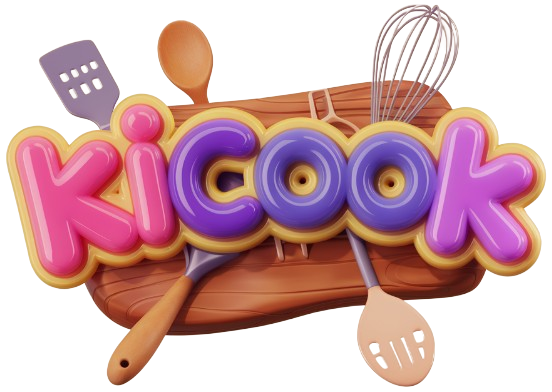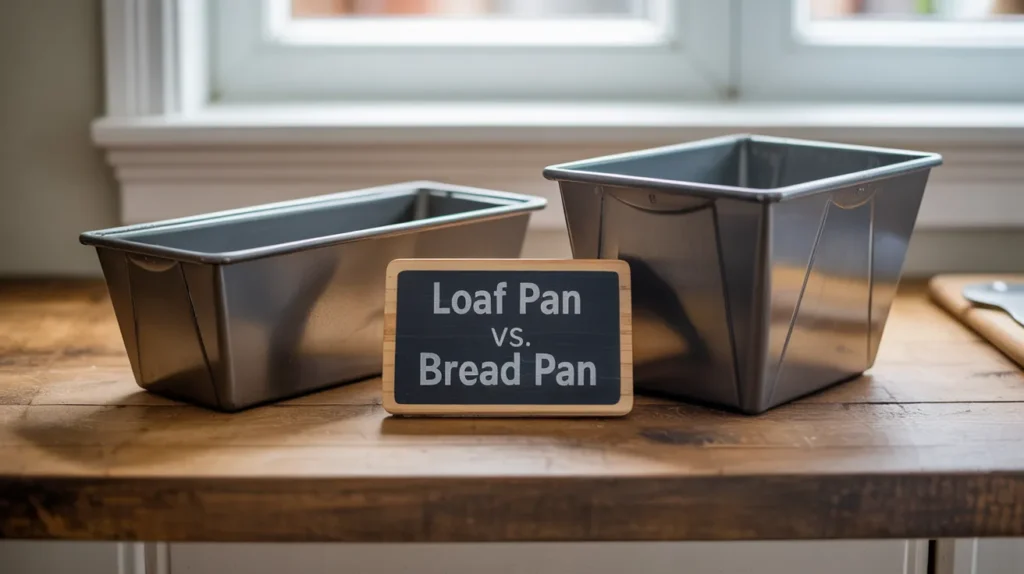The first time I asked my grandmother for her banana bread recipe, she handed me a battered tin and casually said, ‘Just pop it in the bread pan.’ I blinked. Was that the same as a loaf pan? Cue a mild existential crisis in my kitchen. Turns out, like many arguments between siblings (or bake-off contestants), sometimes naming is just… semantics. Or is it?
Let’s take a fresh, hands-on look at loaf pans versus bread pans—with stories, surprises, and a few detours through my own kitchen mishaps.

Naming Nonsense: Loaf Pan vs. Bread Pan (and Why Nobody Agrees)
Let me start with a confession: my first attempt at cinnamon swirl bread was a disaster, and it all came down to a simple label mix-up. I grabbed what I thought was the right pan—clearly marked “bread pan”—but the recipe called for a “loaf pan.” I didn’t think twice. The result?
Overflowing batter, a lopsided loaf, and a kitchen that smelled amazing but looked like a flour bomb had gone off. That’s when I realized: choosing bread pans isn’t just about shape or size—it’s about language, too.

Here’s the thing: if you ask around, you’ll quickly find that nobody agrees on what to call these pans. In the U.S., most people say “loaf pan.” Head over to the UK or Australia, and you’ll hear “bread pan” or “bread tin” instead. But are bread pans and loaf pans really different? Research shows the answer is mostly no.
The names are largely a matter of regional preference, not technical difference. Manufacturers rarely distinguish between the two, though packaging might change based on where you live.
Historically, the word “loaf” refers to the finished shape—the classic rectangle we all picture when someone says “homemade bread.” “Bread,” on the other hand, is the broader food group. That subtle difference in language has led to a lot of confusion on shelves and in kitchens. Sometimes, even recipes can’t decide which term to use, leaving bakers like me second-guessing their choices.
It’s not just about what we call them, either. The shape and size of these pans have evolved with our baking traditions. In some regions, a “bread pan” might be slightly larger or have taller sides, but there’s no universal rule. As Sarah Owens once said,
‘Ask two bakers and you’ll get three opinions on what to call that pan.’
So, when it comes to choosing bread pans or loaf pans, it’s less about the name and more about what works for your recipe and your region. The lack of universal agreement is rooted in both cultural habits and baking history, making this a surprisingly personal part of the baking world.
Size and Shape Showdown: When Pan Dimensions Make or Break Your Bread
When it comes to bread pan sizes, I’ve learned the hard way that an inch can make all the difference. At first glance, the difference between an 8½ x 4½ inch loaf pan and a 9 x 5 inch bread pan might seem trivial. But in baking, that extra inch translates to roughly a 15% increase in volume. That’s enough to dramatically change how your bread rises, bakes, and even tastes.
Let’s break down what this means for your favorite bread recipes. If you’re making a classic yeast sandwich bread, the 8½ x 4½ inch pan is usually the gold standard. This size supports a tall, even rise and gives that iconic sandwich bread shape. On the other hand, quick breads—think banana bread or zucchini loaf—tend to fare better in the slightly larger 9 x 5 inch pan. The extra space helps accommodate the denser batter and prevents overflow.
Here’s a quick comparison of the two most common loaf pan dimensions:
| Pan Size | Best For | Approx. Volume |
|---|---|---|
| 8.5 x 4.5 inch | Yeasted sandwich breads | 6 cups |
| 9 x 5 inch | Quick breads, whole grain loaves | 7+ cups |
Why does this matter? Well, let’s say you try to bake your favorite banana bread recipe in a pan that’s too small. The batter rises, spills over the sides, and you end up with a sticky mess at the bottom of your oven. Overfilling a pan can also lead to dense, underbaked centers—something I’ve unfortunately experienced more than once. On the flip side, using a pan that’s too large can result in a squat, dry loaf.
Matching the right pan to the right bread isn’t just about aesthetics. Research shows that the capacity difference impacts both the rise and the final texture of your loaf. Sometimes, adapting bread recipes to fit your pan size is necessary to avoid these pitfalls. As Julia Turshen puts it:
‘Selecting the right pan size is the secret handshake of bread bakers.’
So, whether you’re experimenting with whole grain loaves or sticking to classic sandwich bread, paying attention to loaf pan dimensions can make or break your baking success.
Material Matters: From Non-Stick to Ceramic (and Why the Pan You Use Changes Everything)
When I first started baking bread, I didn’t give much thought to loaf pan materials. I figured a pan was a pan—until the day I swapped my old glass loaf pan for a metal one. The difference was immediate: my sandwich bread came out with a golden, crisp crust that I’d never managed before. That accidental discovery sent me down a rabbit hole of baking techniques and pan comparisons, and honestly, it changed the way I think about baking bread.
Why Pan Material Matters
Research shows that the material of your loaf pan affects everything from crust texture to ease of cleanup. Aluminum pans, for example, are a favorite among bakers for their even heat distribution. This means your bread bakes more uniformly, with fewer burnt edges or soggy bottoms. If you’re after that classic bakery-style loaf, aluminum pans are hard to beat.

Comparing Loaf Pan Materials
- Non-stick pans: These are a lifesaver for sticky batters like banana bread. The easy release means you won’t be chiseling your loaf out of the pan, and cleanup is usually a breeze. Just remember, most non-stick pans need to be hand-washed to preserve the coating.
- Aluminum pans: Known for best-in-class heat distribution and browning. They’re my go-to for everyday baking.
- Glass loaf pans: They heat up slowly and retain heat longer, which can lead to a softer, more evenly baked loaf. But, I’ve found the crust isn’t quite as crisp as with metal.
- Ceramic pans: Similar to glass, ceramic pans are great for gentle, even baking. They’re heavier, and like glass, they can produce a tender crumb but a softer crust.
Cleaning Tales (and Warnings)
I’ll never forget the cheese bread explosion that left gooey, baked-on cheese fused to every corner of my ceramic pan. Let’s just say, not all loaf pan materials are created equal when it comes to cleanup. Non-stick pans are a dream, but glass and ceramic can require some serious elbow grease.
‘The right pan can transform a so-so loaf into bakery-worthy bread.’ – Peter Reinhart
| Material | Heat Distribution | Release/Cleanup | Recommended Cleaning |
|---|---|---|---|
| Aluminum | Best | Good | Dishwasher safe |
| Non-stick | Good | Easy | Hand-wash only |
| Glass/Ceramic | Even, slow | Moderate | Dishwasher safe |
Wild Card: Specialty Loaf Pans and When to Break All the Rules
Sometimes, the best part of baking bread is breaking the rules. Sure, we all know the classic loaf pan shape—rectangular, reliable, and perfect for sandwich bread. But what happens when you swap that standard pan for something a little more unexpected? Enter the world of specialty loaf pans: mini pans, heart-shaped molds, and novelty sizes that turn ordinary bread recipes into something truly memorable.
Mini loaf pans, for example, are a game-changer. They let you bake smaller portions, experiment with flavors, or create adorable gifts. Research shows that these specialty pans expand bread-baking versatility and presentation, making it easier than ever to try new ideas. I’ve found that using mini pans for whole grain loaves or even quick breads lets me control portion size and reduce waste—plus, they look fantastic on a brunch table or in a lunchbox.

Then there are the novelty shapes. Heart-shaped molds, star pans, or even animal-shaped tins can turn a simple artisanal bread into a centerpiece. When I bake with these, it’s not just about the taste—it’s about the experience. Artisanal and whole grain breads, in particular, benefit from experimenting with pan shape and size.
The crust, crumb, and overall texture can change dramatically, sometimes resulting in a loaf that’s crispier, chewier, or just more fun to eat. And let’s be honest: a uniquely shaped loaf is guaranteed to get a few extra likes on Instagram.
Of course, not every loaf needs to fit neatly into a sandwich. Some of my favorite bread recipes are the ones that don’t follow any rules—rustic, uneven, and full of character. There’s a certain joy in slicing into a loaf that’s a little lopsided or oddly shaped. It’s a reminder that bread baking is as much about creativity as it is about precision. Or, as Zoë François puts it,
‘Bread baking is science, but the pan is your palette.’
So, whether you’re baking a classic whole grain loaf or trying out a new artisanal bread recipe, don’t be afraid to reach for a specialty loaf pan. Sometimes, the best results come from breaking the mold—literally and figuratively. After all, the first slice is always a little bit magical, no matter what shape it takes.
Frequently Asked Questions For Loaf Pan vs Bread Pan
Can I use a cake pan instead of a bread pan?
Yes, but results vary. Cake pans are shallower, so your bread may spread more than rise.
Do I need to grease a non-stick bread pan?
Even non-stick pans benefit from light greasing to ensure easy release.
Why did my bread sink in the middle?
This could be due to underbaking, overproofing, or using the wrong pan size.
Can I bake sourdough in a loaf pan?
Yes! A loaf pan helps structure wet sourdough dough better than free-form baking.
“Baking is science, but the right tools make it art.” — Paul Hollywood
Tips for Choosing the Best Pan
- Measure Accurately: Use the pan size specified in your recipe.
- Consider Material: Metal for crisp crusts, glass for even baking.
- Check Durability: Heavy-duty pans last longer and warp less.
- Non-Stick vs. Traditional: Non-stick is easier, but seasoned steel gives better browning.
Conclusion
So, does the name or shape of your pan really matter in baking? Yes! While “loaf pan” and “bread pan” are often used interchangeably, slight differences in size, material, and depth can impact your bread’s texture, rise, and crust.
Whether you’re baking a fluffy sandwich loaf or a crusty artisan bread, choosing the right pan ensures consistent, delicious results. Experiment with different types to find your favorite—after all, baking is all about joy and discovery!
“Good bread is the most fundamentally satisfying of all foods.” — James Beard
Now that you know the difference, grab your pan and start baking!

